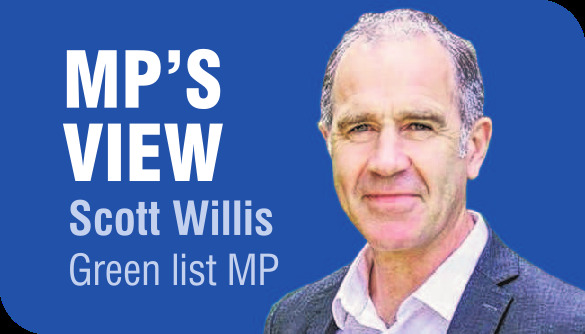
The Southerner, running between Christchurch and Invercargill via Dunedin, ran successfully from 1970, with at least two services on any given day. Then, in 1993, the rail system was sold privately, before being sold back to the government in a significantly degraded condition.
Today, we still have many of the railway tracks, our own iconic Dunedin Railway Station and, most importantly, the will of the people to restore affordable passenger rail.
In July I was honoured to stand alongside the Minister for Rural Communities Mark Patterson, along with the Honourable Rachel Brooking on the steps of the Dunedin Railway Station, to receive a petition to ‘‘restore the Southerner Train as a regular public service’’, complete with 12,750 signatures.
Those signatures were gathered in just one month. It’s clear Kiwis know the value of passenger rail: often cheaper and more accessible than flying, and safer than travelling by car. Now, the challenge for MPs is to convince their own parties of the value of a regular public transport service.
Not so for the Greens — we’re all already on board!
Last month, it was my pleasure to attend the Otago Rail Branch AGM to talk about our own practical Green plan to deliver a passenger rail service between Ōtepoti Dunedin and Ōtautahi Christchurch. We will extend it to Waihōpai Invercargill as demand grows.
It will begin with leased rail cars from Kiwirail, refurbishment of stations at Rolleston, Timaru, Oamaru and Ashburton, and one train each way per day in the initial phase.
Once the passenger service has been proven, we would electrify and upgrade the main line from Ōtautahi Christchurch to Hakatere Ashburton to 110kmh and buy tilt trains to run the service and speed up travel times.
Passenger rail makes efficient use of existing infrastructure — and with some additional double track investment rail can easily carry more freight and passenger services.
There’s not only a benefit in making mobility more equitable (for many people, car dependency is an unwanted financial and personal burden), there’s an urgent need to reduce emissions. While a domestic flight creates about 246g of CO₂ per kilometre travelled, regional rail costs about 36g of CO₂ per kilometre travelled, dropping further once electrified to 4g of CO₂ per kilometre.
Making mobility more equitable, reducing emissions and the pure pleasure of travelling by train — who wouldn’t want that?
The thing is, it doesn’t have to be a dream, it’s simply a choice. A choice between our plan to deliver regional rail versus the government’s increased road congestion, growing emissions and ever more inequality.















